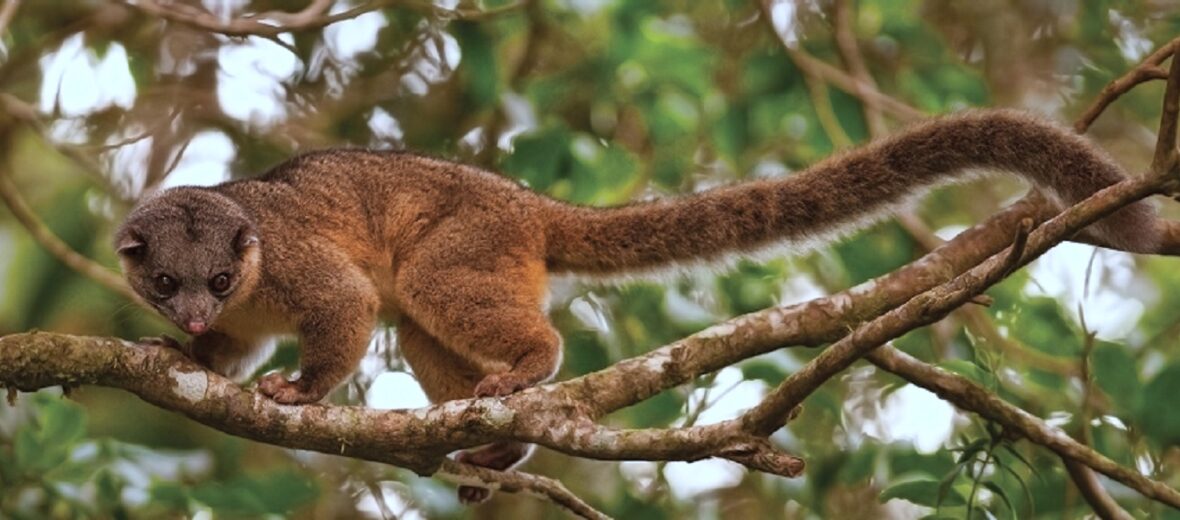
The olingo, aka olinguito (although the olinguito is a separate species) or bushy-tailed olingo, who’s closest relatives are kinkajous, raccoons, and coatis, can only be found in Central America and northern South America. There are 4 known species of olingos. They prefer to live in tropical rainforests. Even though nearly 50% of their habitat has been destroyed for agricultural needs, these peculiar critters are still listed as Least Concern by the IUCN. But their numbers are steadily decreasing.
First the Stats…
Scientific name: Bassaricyon
Weight: Up to 2.7+ lbs.
Length: Up to 16 inches, plus a 19 inch tail
Lifespan: Up to 17 years
Now on to the Facts!
1.) Olingos are strictly arboreal (spend their lives in trees).
2.) Sharing many of the same morphological traits as the kinkajou, these 2 species underwent divergent evolution approximately 22 million years ago. Divergent evolution is the process where interbreeding species diverged into 2 or more evolutionary groups. It basically means that these groups of species used to be similar and even related. However, they have since become more and more dissimilar over time.
3.) The olingo is a nocturnal (active at night) critter that sleeps in tree hollows during the day.
4.) These creatures are solitary and only come together to mate.
5.) They eat nectar, fruit, and insects. This makes them omnivores (eat plant and animal matter).
But wait, there’s more on the olingo!
6.) Tayras, jaguars, ocelots, and large snakes all prey on these cute critters.
7.) Olingos can produce a strong scent from their anal glands that is used, in part, to deter predators.
Did you know…?
Their long tails are not prehensile (used as an additional limb) but rather just used for balance among the trees. These critters can jump up to 6 feet, from branch to branch, while exploring and evading predators.
8.) Due to the close proximity to the equator, there aren’t really any discernible seasons, so these creatures breed year round.
9.) Males make a loud call when courting a female. They make a “whey-chuck” or “wey-toll” sound.
10.) Females birth a single cub after a 73 day gestation (pregnancy).
Now a Short Olingo Video!
Be sure to share & comment below! Also, check out the Critter Science YouTube channel. Videos added frequently!
Want to suggest a critter for me to write about? Let me know here.



